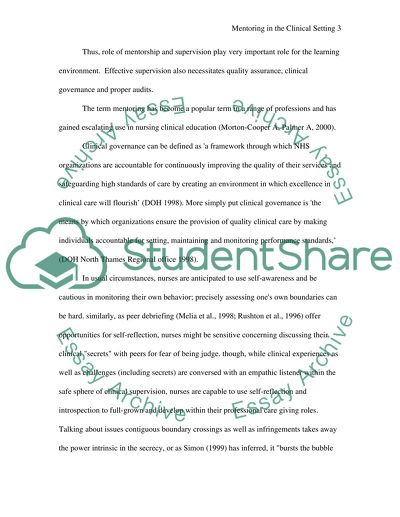Cite this document
(“Mentoring in the Clinical Setting Essay Example | Topics and Well Written Essays - 3500 words”, n.d.)
Mentoring in the Clinical Setting Essay Example | Topics and Well Written Essays - 3500 words. Retrieved from https://studentshare.org/health-sciences-medicine/1527326-mentoring-in-the-clinical-setting
Mentoring in the Clinical Setting Essay Example | Topics and Well Written Essays - 3500 words. Retrieved from https://studentshare.org/health-sciences-medicine/1527326-mentoring-in-the-clinical-setting
(Mentoring in the Clinical Setting Essay Example | Topics and Well Written Essays - 3500 Words)
Mentoring in the Clinical Setting Essay Example | Topics and Well Written Essays - 3500 Words. https://studentshare.org/health-sciences-medicine/1527326-mentoring-in-the-clinical-setting.
Mentoring in the Clinical Setting Essay Example | Topics and Well Written Essays - 3500 Words. https://studentshare.org/health-sciences-medicine/1527326-mentoring-in-the-clinical-setting.
“Mentoring in the Clinical Setting Essay Example | Topics and Well Written Essays - 3500 Words”, n.d. https://studentshare.org/health-sciences-medicine/1527326-mentoring-in-the-clinical-setting.


